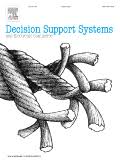Study: Early social distancing linked to smaller death rates, larger second waves
Editor's Note
This study led by researchers at State University of New York, Binghamton, finds that social-distancing measures implemented by states in the early months of the COVID-19 pandemic resulted in smaller death rates, but led to larger second waves. Conversely, social-distancing measures implemented by states later in the pandemic resulted in higher initial death rates but smaller second waves.
In this decision analysis, researchers used the daily number of COVID-19 cases published by the Centers for Disease Control and Prevention (CDC) for the states of New York and Nebraska from January 3 to April 23, 2020.
The data suggest that the same social distancing policy can have different effects on the evolution of the epidemic in different populations.
Applying two trigger thresholds (early, when outbreak reaches 0.5% infection prevalence and late, when outbreak reaches 1% infection prevalence) for starting social distancing shows how the dynamics of an outbreak can be changed:
- When social distancing is triggered early, the outbreak has a smaller first peak and a much higher second peak in number of cases.
- When social distancing is triggered later, the outbreak has a higher first peak, and a smaller second peak in cases.
Early and late triggers also result in different death tolls.
- An early trigger results in a lower death rate and a low transmission rate.
- A late trigger results in a higher death rate and a high transmission rate.
Results show that the main benefit of social distancing is to buy time by delaying the peak, the researchers say. The length of time of social distancing has minimal to no effect on the magnitude of the second wave.
Early or late triggers may be used to balance the magnitudes of the waves to mitigate and manage healthcare system bed and ICU capacity.
Read More >>

 Free Daily News
Free Daily News